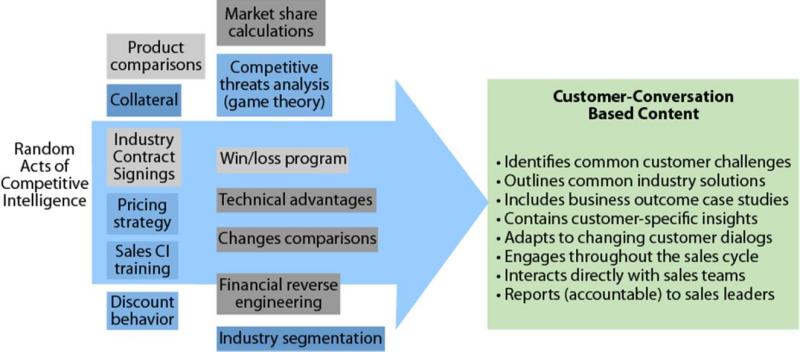A Shared Vision Of Success – With Customer & Market Intelligence
Successful sales enablement reaches beyond just sales. Marketing functions such as customer and market intelligence (CMI) supply materials to your direct sales teams. This content can significantly improve sales impact if it is timely, relevant, and in-context, which for CMI means:
- Timely – the right information available to sales teams at the right time.
- Relevant – content that sales teams can easily adapt into customer content.
- In-context – framed by the business outcomes that customers use to make purchasing decisions.
Without these attributes, CMI content is usually described as "random." While the content is not random from the view of planners and executives who use it, the value to sales is limited because it does not map to steps in the sales engagement process, requires rework to be useful, and competes with other forms of seemingly random acts of "help" directed toward sales.

Customer-focused CMI requires a complete reversal in your design point for content. Competitor analysis builds on this customer-centered approach by looking at how competitors position themselves to address the same customer issues, in addition to product features, company comparisons, sales tactics, and battle cards. Customer intelligence creates case studies based on customer problems rather than your technology products. Using customer conversations as the design point enhances the usability of research by sales teams.
Although CMI can align with and impact sales, they cannot take the lead in defining the customer problems or company messages. Creating that vision remains with sales enablement professionals who should then include support organizations, such as CMI, in the sales enablement strategy.
How does your company prepare CMI content? How does your sales team consume it? How have you overcome the "random acts of CMI?"